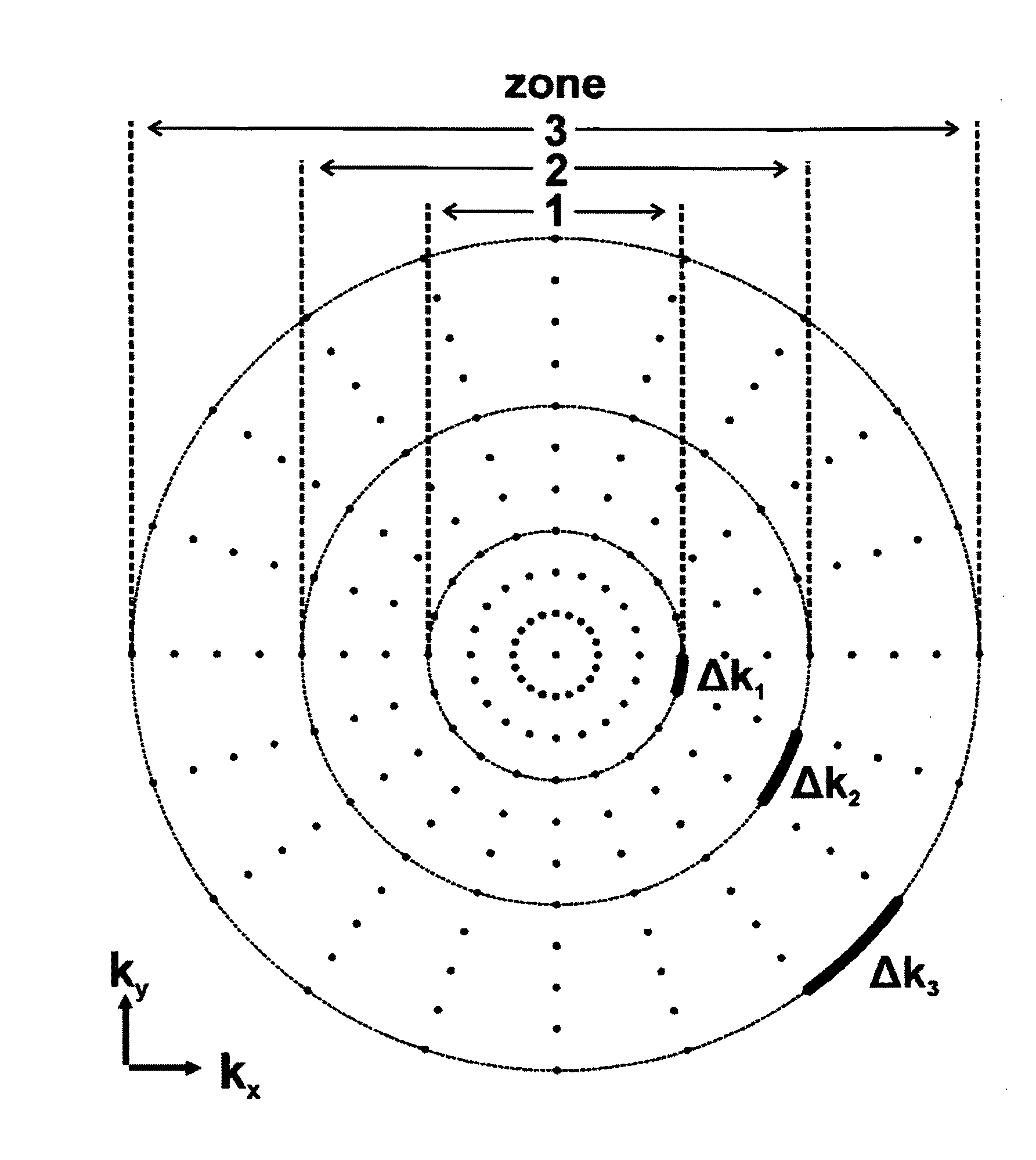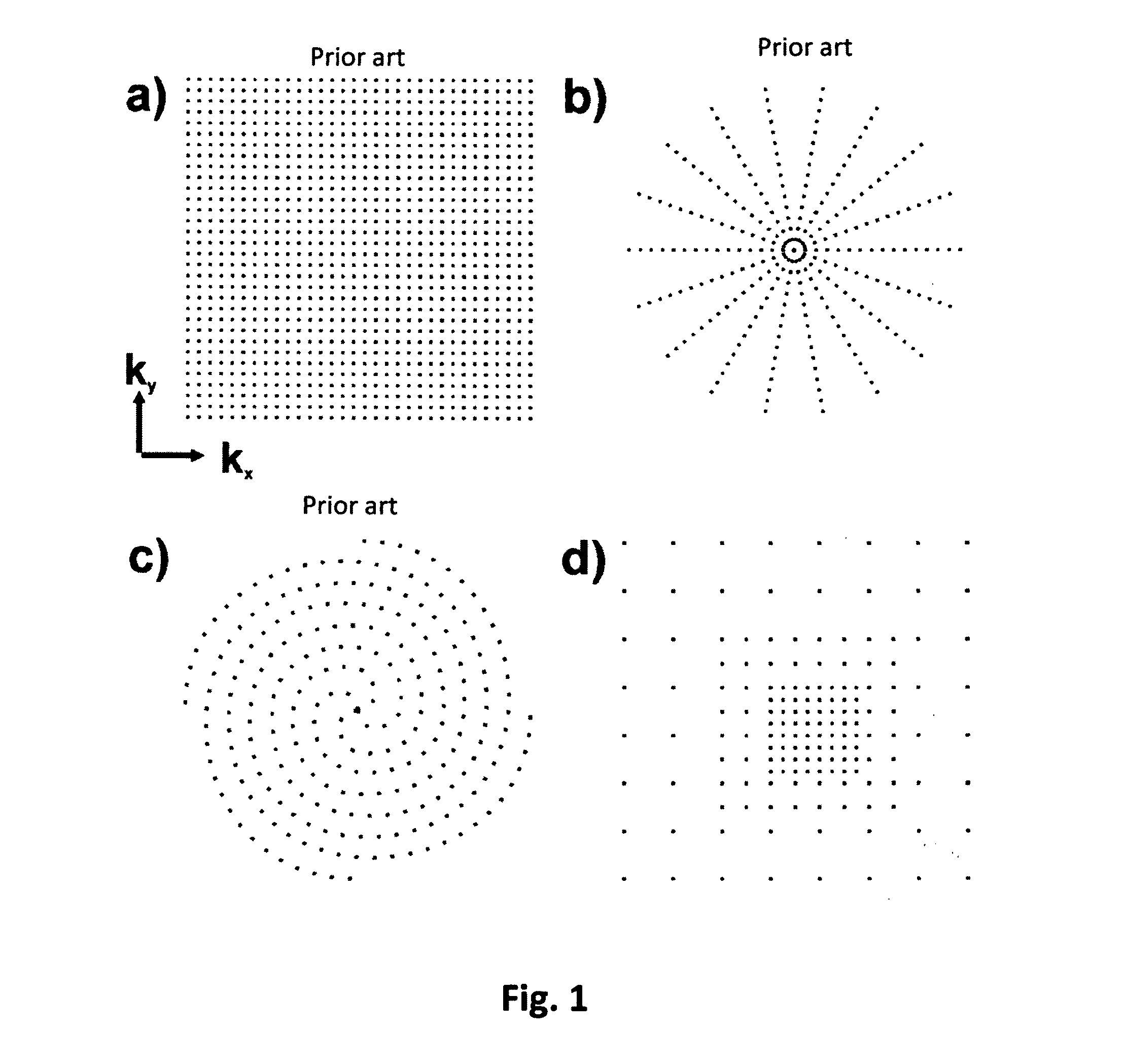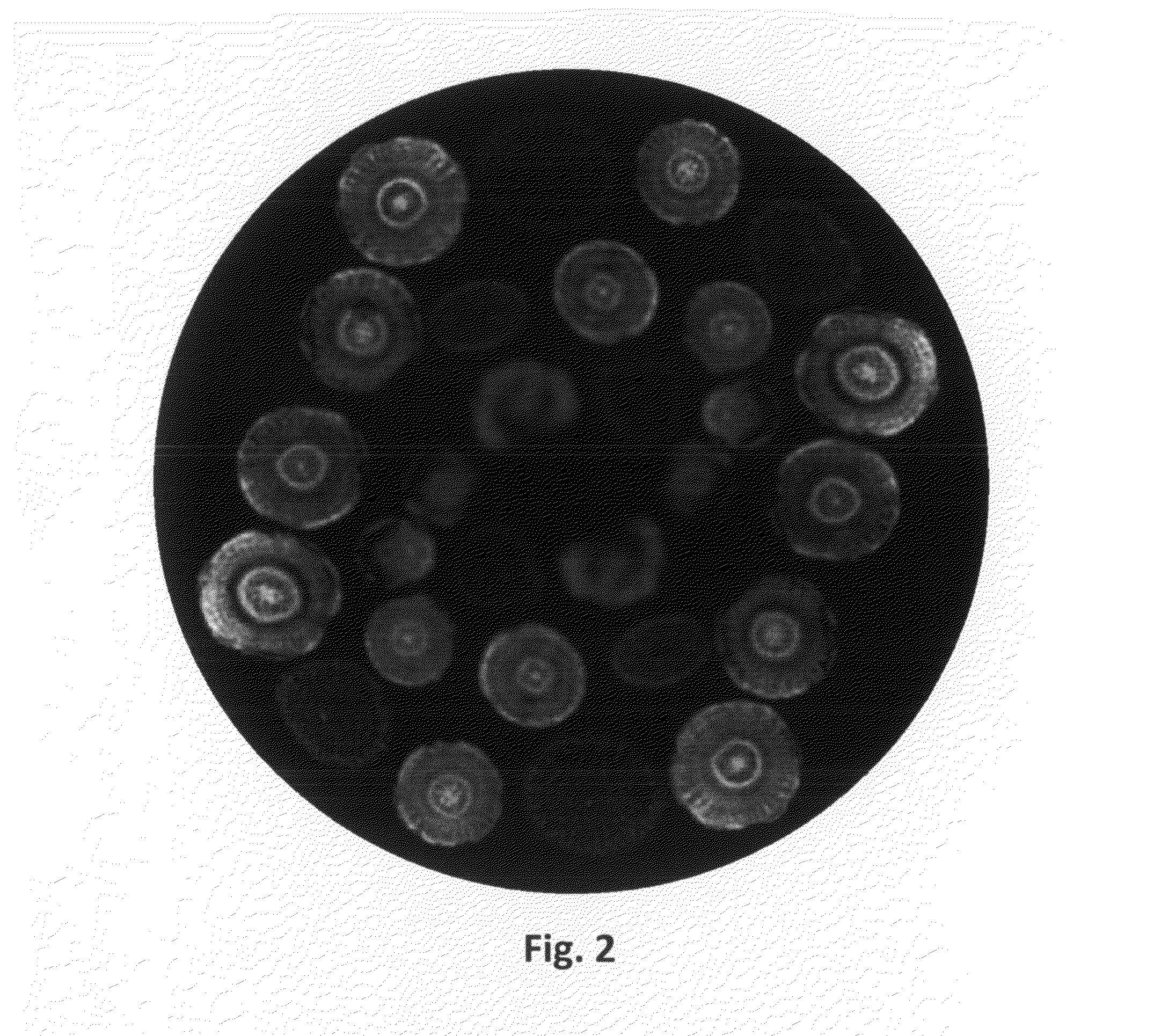Method for homogenizing resolution in magnet resonance tomography measurements using non-linear encoding fields
a magnet resonance tomography and nonlinear encoding field technology, applied in the field of magnetic resonance (= mr) imaging, can solve the problems of poorer resolution, limited associative increase in resolution, and aliasing of artifacts
- Summary
- Abstract
- Description
- Claims
- Application Information
AI Technical Summary
Benefits of technology
Problems solved by technology
Method used
Image
Examples
Embodiment Construction
[0054]The present invention relates to a further development of methods for magnetic resonance imaging that use non-linear gradients for spatial encoding. Such a method is known, for example, by the name PatLoc, by which the properties of non-linear spatial encoding are explained below by way of example.
[0055]In a typical implementation of PatLoc, spatial encoding is performed along the two dimensions perpendicularly with respect to the direction of the main magnetic field B0 by means of quadrupolar gradient fields while, for technical reasons, a linear gradient is still used for encoding in the direction of the B0 field. While commonly used linear gradient systems already result in considerable magnetic field differences for typical spatial resolutions and measurement times in the outer regions, especially, with large objects to be imaged, the latter can be considerably reduced through use of an adapted, non-linear gradient system. Consequentially, the Lorentz forces resulting from...
PUM
 Login to View More
Login to View More Abstract
Description
Claims
Application Information
 Login to View More
Login to View More - R&D
- Intellectual Property
- Life Sciences
- Materials
- Tech Scout
- Unparalleled Data Quality
- Higher Quality Content
- 60% Fewer Hallucinations
Browse by: Latest US Patents, China's latest patents, Technical Efficacy Thesaurus, Application Domain, Technology Topic, Popular Technical Reports.
© 2025 PatSnap. All rights reserved.Legal|Privacy policy|Modern Slavery Act Transparency Statement|Sitemap|About US| Contact US: help@patsnap.com



